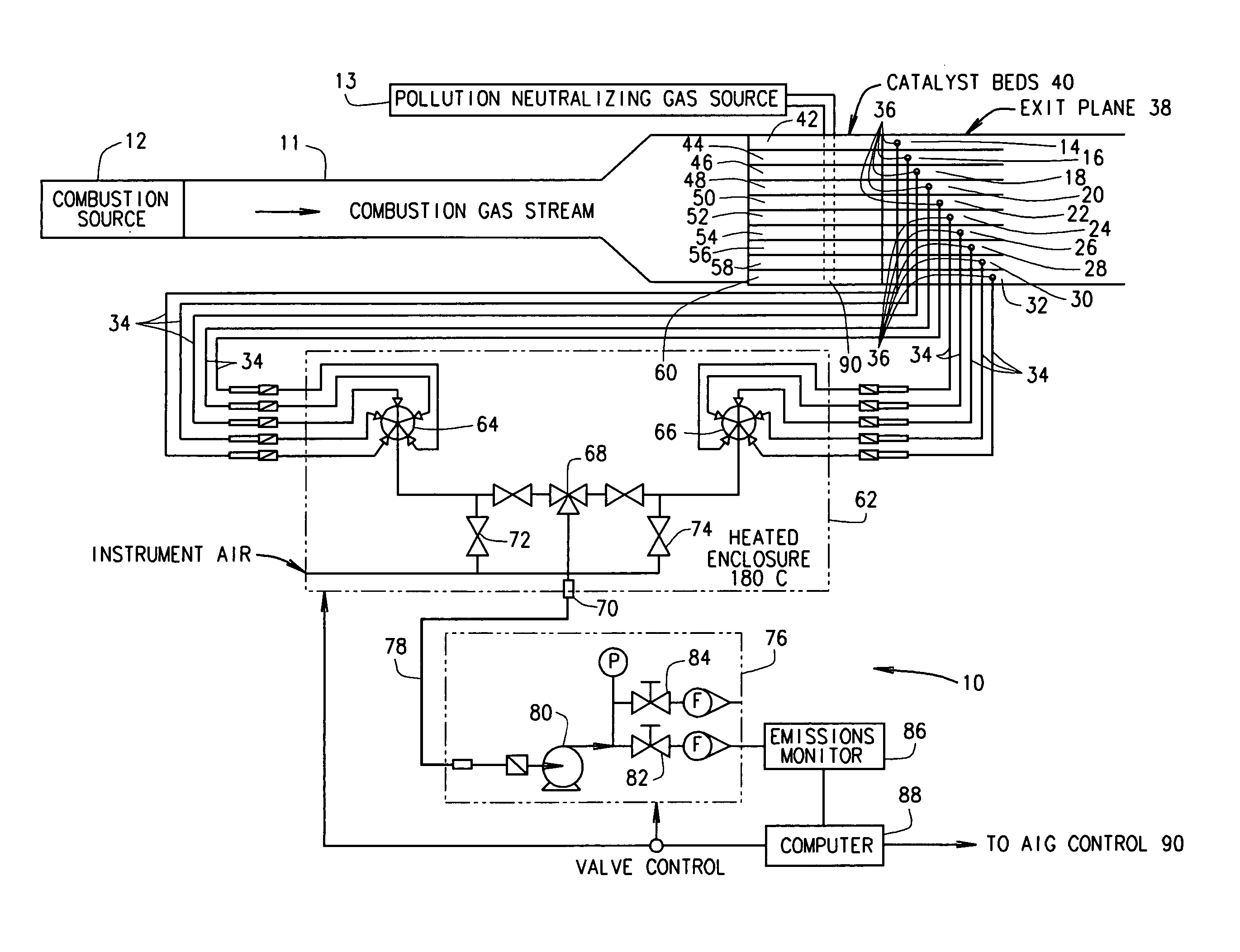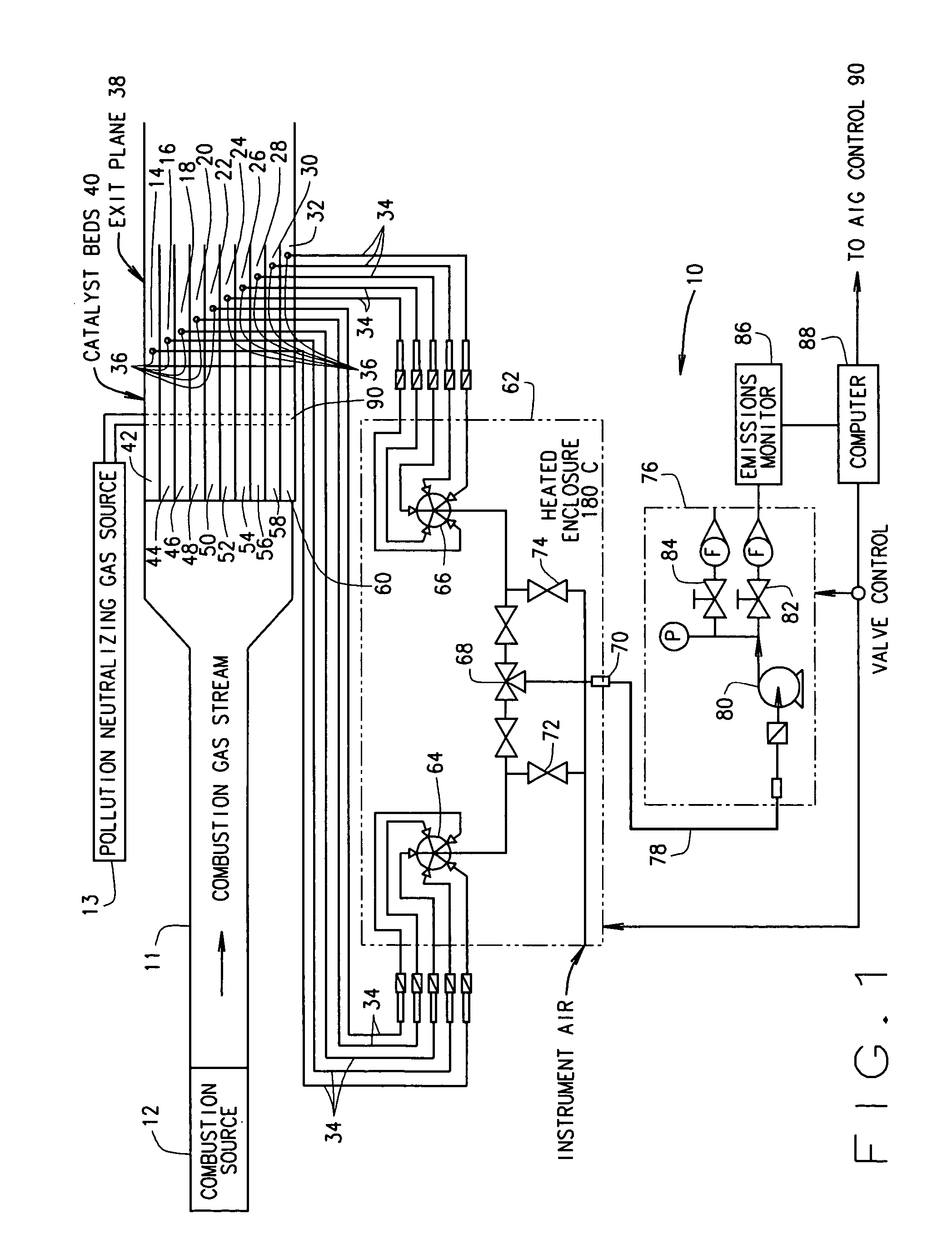Method and apparatus for measuring and controlling selective catalytic reduction (SCR) emission control systems
a selective catalytic reduction and emission control technology, applied in the direction of nitric oxide, machine/engine, chemical/physical processes, etc., can solve the problems of improper control, degradation of scr catalyst, reactivity of scr catalyst over time, etc., to facilitate the reaction of pollution
- Summary
- Abstract
- Description
- Claims
- Application Information
AI Technical Summary
Benefits of technology
Problems solved by technology
Method used
Image
Examples
Embodiment Construction
[0018] In some configurations of the present invention and referring to FIG. 1, a selective catalytic reduction (SCR) measuring and control system 10 is provided for reducing pollution from a combustion source 12. A non-exhaustive list of such combustion sources includes gas turbine combustion sources, fossil fuel-fired combustion sources, and industrial processes (for example, quartz manufacturing). Combustion source 12 produces a combustion gas stream containing a pollutant gas, for example, NOx. A quantity of a pollution neutralizing gas 13 (e.g., NH3) is injected into combustion gas stream 11 at or upstream from a catalyst 40 using an injection grid 90 such as an ammonia injection grid (AIG) 90.
[0019] (It is recognized that ammonia is considered a hazardous air pollutant in many states. However, referring to ammonia as a “pollution neutralizing gas” should not result in any confusion to one of ordinary skill in the art. Ammonia is referred to herein as a “pollution neutralizing...
PUM
| Property | Measurement | Unit |
|---|---|---|
| constant temperature | aaaaa | aaaaa |
| concentration | aaaaa | aaaaa |
| time-averaged ratios | aaaaa | aaaaa |
Abstract
Description
Claims
Application Information
 Login to View More
Login to View More - R&D
- Intellectual Property
- Life Sciences
- Materials
- Tech Scout
- Unparalleled Data Quality
- Higher Quality Content
- 60% Fewer Hallucinations
Browse by: Latest US Patents, China's latest patents, Technical Efficacy Thesaurus, Application Domain, Technology Topic, Popular Technical Reports.
© 2025 PatSnap. All rights reserved.Legal|Privacy policy|Modern Slavery Act Transparency Statement|Sitemap|About US| Contact US: help@patsnap.com



